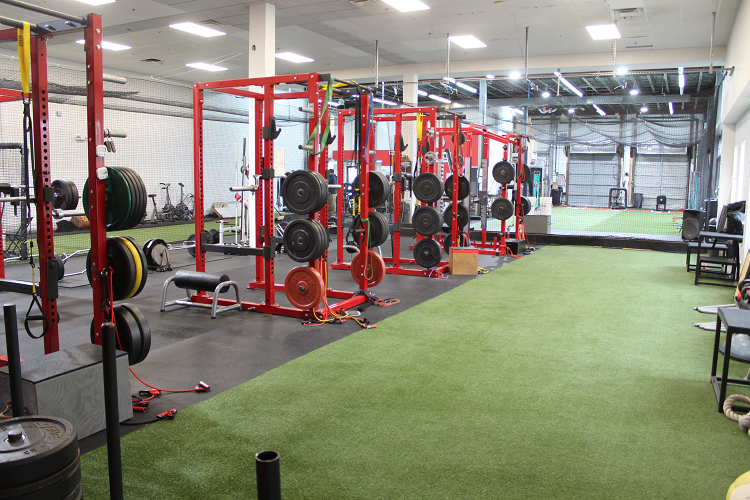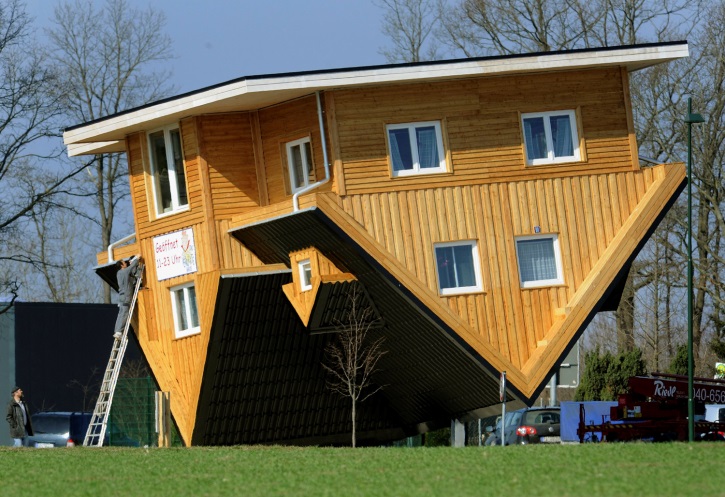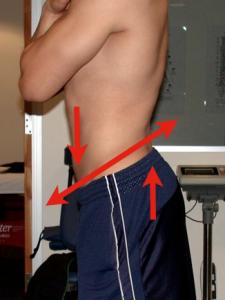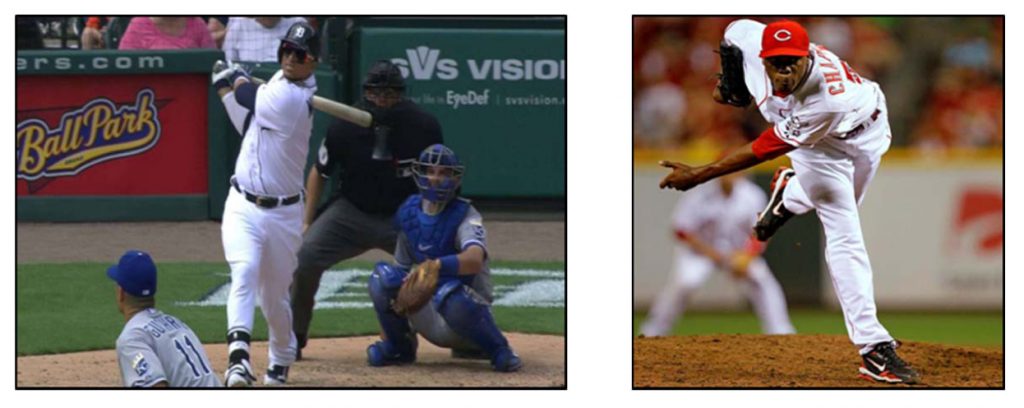
Training in the fall sets up the foundation for later phases of training. The main objective is to elicit a progressive adaptation of the athlete’s anatomy and tendon strength to enable them to safely lift with more load later on. Athletes who skip these months and jump right into training strength in November do not reap the same benefits as those athletes that spend 4-8 weeks in the fall prior to moving into November. With the fall season right around the corner, I thought this would be a great time for me to talk a little bit about the importance of early off-season training, what I call the “re-conditioning phase”.
Increases in strength come about via two broad adaptations / methods. Muscle morphological adaptations (hypertrophy) and neural activation adaptations (absolute strength). With these broad adaptations come the two main training methods to increase strength and power:
Hypertrophy / Tissue Prep – Lifting moderate resistances at higher repetitions to improve muscle fiber size, change in fiber structure and architecture as well as prepare the ligaments and tissue for the “heavier work ahead.
Absolute Strength – Lifting heavier (generally 80-90% 1RM) weights at lower repetitions (3-5) to improve neural activation of motor units within a muscle, increased rate of firing of motor units, and possibly some synchronization of firing of those motor units.
As the need for maximum strength increases, so does the length of the maximum strength phase of training. An athlete’s ability to increase maximum strength depends on the diameter of the cross-sectional area of muscle involved (muscle size) and the resilience of the soft tissue to with stand higher loading in the weight room. Muscle size depends greatly on the duration of the hypertrophy phase, whereas the diameter of myosin and the increase in protein content in the form of cross-bridges depends on the volume and duration of the maximum strength phase.
Many young athletes opt to play fall ball and skip training during this crucial period when we can focus specifically on the hypertrophy phase. Unfortunately, these athletes who many times are underweight and weaker, are exactly the athletes who would benefit from training in the fall the most. The good news is both, fall ball and training, can be done during the same time period.
So, here we go…
During the season, constant throwing and multiple games/practices per week can really wreak havoc on a baseball player’s shoulders and hips. Even during in-season training these are areas we can’t focus on due to the fact that they’re already under a tremendous amount of stress from throwing and hitting all week. Add on a 5 lbs. weight loss and 2-3 mile drop in velo and we’ve got some catching up to do. This is all the more reason for ball players to get in early for what we call the “Re-Conditioning Phase”, during which we can focus on hypertrophy and tissue prep. This will help get the muscle-building process started earlier and help athletes get a jump on increasing their movement quality before we hit it hard in the off-season. Starting in September accomplishes a few things:
-
- It can be implemented during “Fall Ball” when many kids are playing limited innings and the slight residual soreness from training will not interfere with “in-season competitive play
- It re-introduces and solidifies good movement quality after a long season
- It provides an extra 8 weeks of muscle building and focusing on weight gain
- It focuses on hypertrophy (muscle mass), better preparing the body for heavier volumes of lifting come November
For the rest o this article, I’m going to take you through much of what goes into this phase of training and why we believe it’s so important. Here’s an outline of what’s to come…
-
- Breathing
- Soft Tissue and Mobility Work
- Cuff and Scap Activation
- Med Ball and Plyometrics
- Manual Resistance
- Strength Training
- Anterior and Anti-rotational Core Work
- Conditioning
- Nutrition
1. Breathing
Learning to breath into the belly is one of the most neglected elements in a training program. At RPP, all of our athletes begin every session with breathing drills to relax the neck and upper traps, as well as taking some of the tone out of the lats, opening up space in the shoulder area and assisting in better upward rotation for better overhead movement. Many players will tell you they have seen us get 5-10 degrees of shoulder internal rotation back with just 5 minutes of breathing drills. Here PT Bill Hartman does a much better job of explaining this than I would:
(90/90 Hip Shift w/ Left Reach – Breathing)
2. Soft Tissue and Mobility Work
Due to the deceleration forces that occur from throwing and batting, the fascia as well as the soft tissue can become very gritty and short (tight). This can present itself as tightness in the shoulder region, t-spine, hips or lower back and hamstrings to name a few. Many pitchers have laxity (loose joints) so actively stretching the muscle sometimes can do more harm than good (for more info on this topic, please make sure to read my blog on laxity). Incorporating self-myofascial release (foam rolling) to improve tissue quality and mobility work (hip flow circuit) to help improve movement quality and prevent injury are two of the main focuses in the fall.
(Hip Flow Circuit)
3. Cuff and Scap Activation
Working on cuff strength is a must, but working on correct movement and teaching the scap to fire quickly is equally important if not more. We include manual ext. rotation drills for strengthening as well as stabilization drills to help increase blood flow to the area and teach the cuff to fire quicker.
(Supine Manual ER/IR)
(Split Stance ER Holds)
4. Med Ball and Plyometrics
Because baseball involves so much rotating and lateral movement, we try to keep much of our work in the early off season in the Sagittal (front to back) plane and keep all throws on the non-dominant side only for the first 4 weeks. This helps to get back a little rotation on the “less used” side and give the dominant side a break. Sagittal plane plyos such as broad jumps replace lateral work prior to doing any multi-directional work.
(Hurdle Hop & Stick)
5. Manual Resistance
Nothing works on strengthening the posterior cuff better than manual resistance drills. They’re also great for activating the posterior cuff just prior to going into the weight room. However, guys who are still playing fall ball need not apply as throwing is hard enough on the cuff.
(Ecc Strength Decelerators)
6. Strength Training
September and October is when we focus on hypertrophy/tissue prep in the weight room. Maximum strength is a must for creating and cementing good stability at adjacent joints as well as being the building block with which both power and speed are built on. Building athletic qualities without a good solid base of strength (muscle) and tissue quality to enable us to get into lower positions safely would be like building a house from the top down.

Early in the off-season (fall), we like to focus on unilateral exercises for the simple reason that they are a bit more “forgiving” movement than bilateral squatting or dead-lifting. This is because of while performing a single leg exercise, you can “cheat” by borrowing a bit of movement from the frontal (side-to-side) plane. In 4-6 weeks, we’ll work eccentrically to help cement some good hip mobility as well as better ankle and core stability. Only then can we go start training bi-lateral with exercises like dead-lifts and squat variations.
(SSB RFESS)
Remember, many young athletes don’t continue to train during the in-season so their movement quality and muscle mass is a bit compromised coming into the gym by September/October.
7. Anterior and Anti-rotational Core Work
Good anterior (front) core strength helps stabilize the thorax (rib-cage) to give the scapula a nice stable surface to move on. It also does wonders to keep our athletes with an anterior pelvic tilt out of extension in their lower lumbar.

Note: Although there is no “rotational” core work early on, we do work on “resisting” core rotation which can go a long way in helping prevent lower back pain as a result of going passed the end-range while throwing a baseball or swinging a bat.

1/2 Kneeling Cable Anti Ext-Rot are great for working on both the anterior and anti-rotational aspects of the core at the same time.
(1/2 Kneeling Cable Anti Ext-Rot)
8. Conditioning
Okay, here is a personal pet peeve of mine. WE DO NO RUNNING IN THE EARLY OFF-SEASON… PERIOD.
Running really compromises an athlete’s strength, and we don’t want to risk any injuries given the amount of strength training our guys will be doing in the upcoming months. Besides, this is the time to get strong. Our emphasis on speed comes a little later on in January/February. If you’d like to dive deeper into my thoughts on this please read my prior article on “Running, the Gift of Slowness” by clicking here.
9. Nutrition
Many guys come into the gym a bit underweight from not training and eating poorly during summer ball. We’re going to give these guys a diet plan to help them gain muscle and consume healthy calories. On the other hand, some of our guys need to drop weight, so we’ll try and get them to choose better quality food choices and adjust the workouts accordingly. It’s very common to see an athlete gain 10-15 lbs. of muscle or lose 10% body fat during the off-season. For all you “hard gainers”, this can easily become a 20-25 lbs. weight gain if an additional 8 weeks of strength training and nutrition are added. Please click here for an off-season nutrition plan.
See ya’ in the gym.
By Nunzio Signore (Owner at RPP Baseball)
You live too far to train with us in-house at RPP? You can now train with us on a REMOTE basis.


